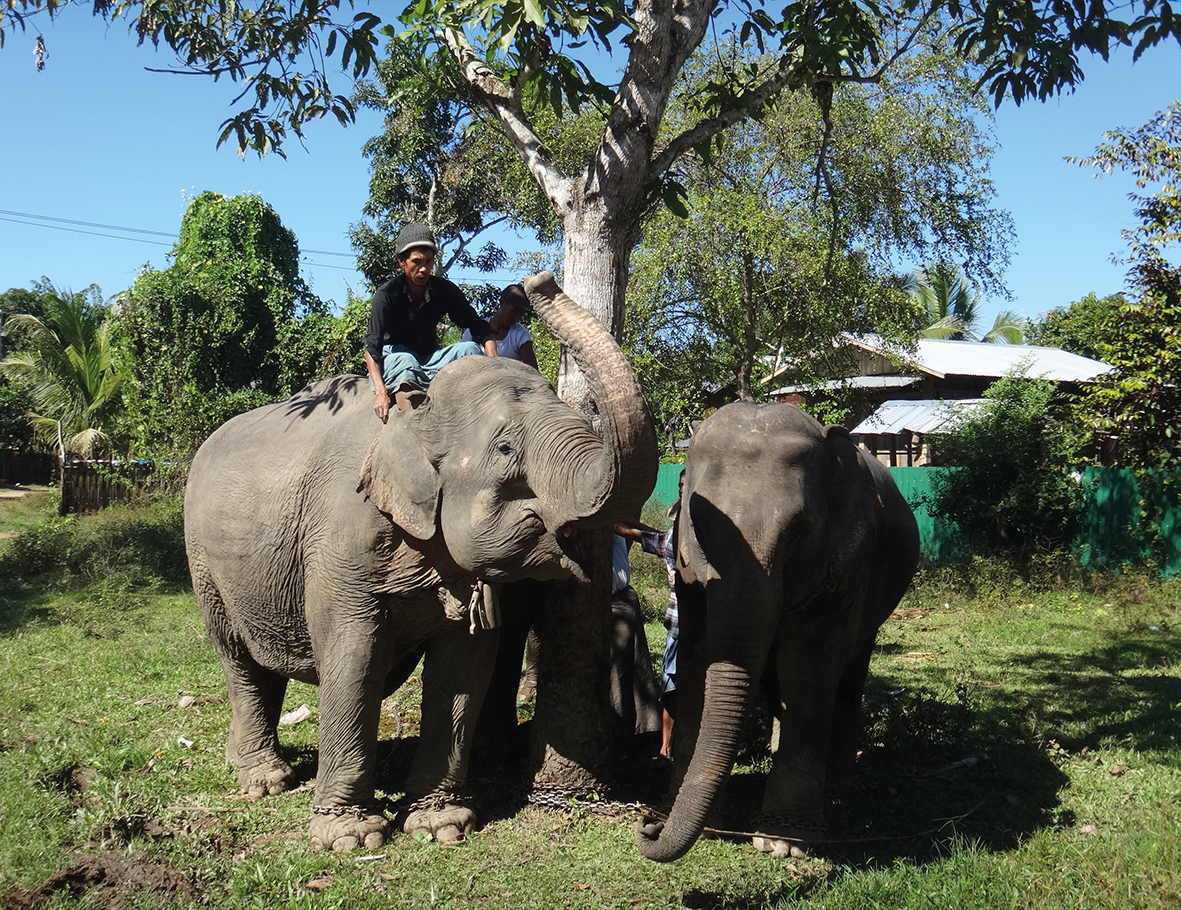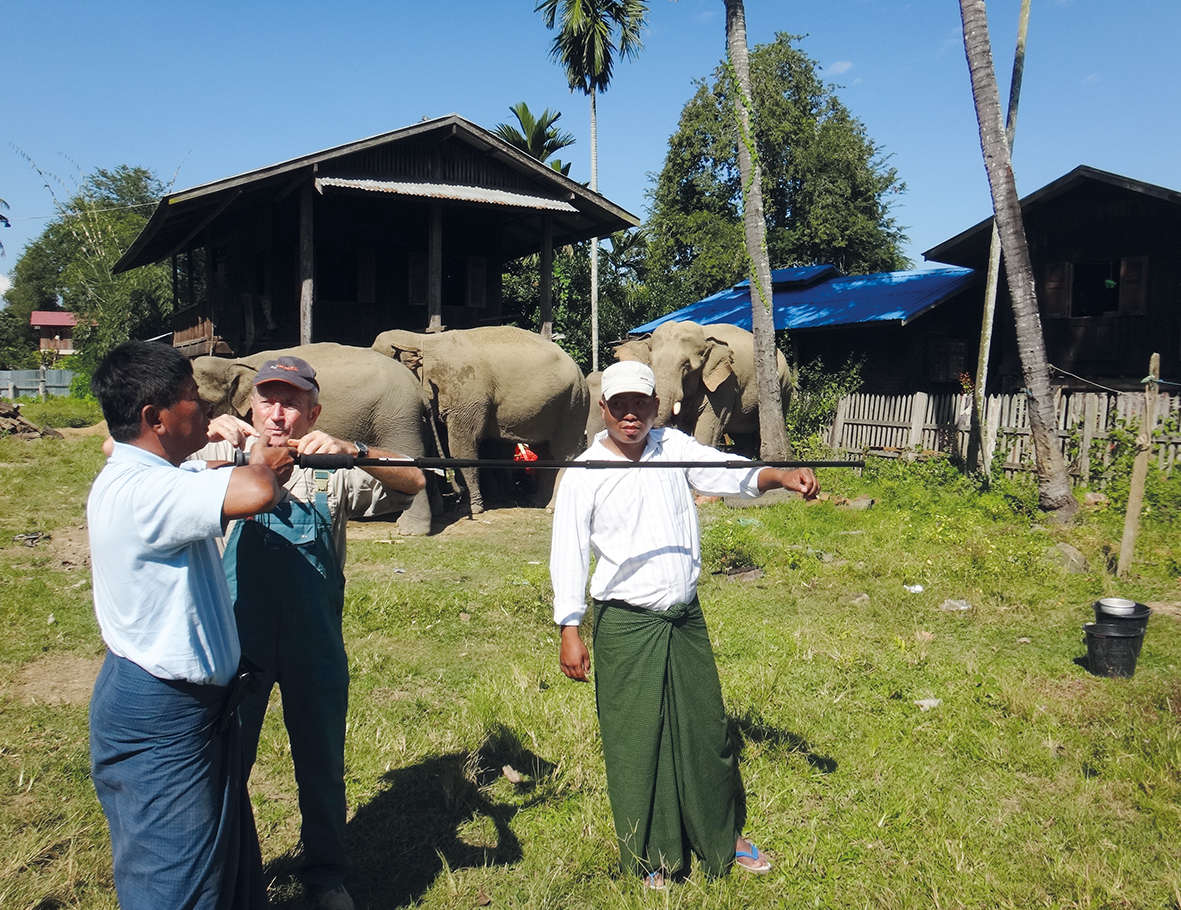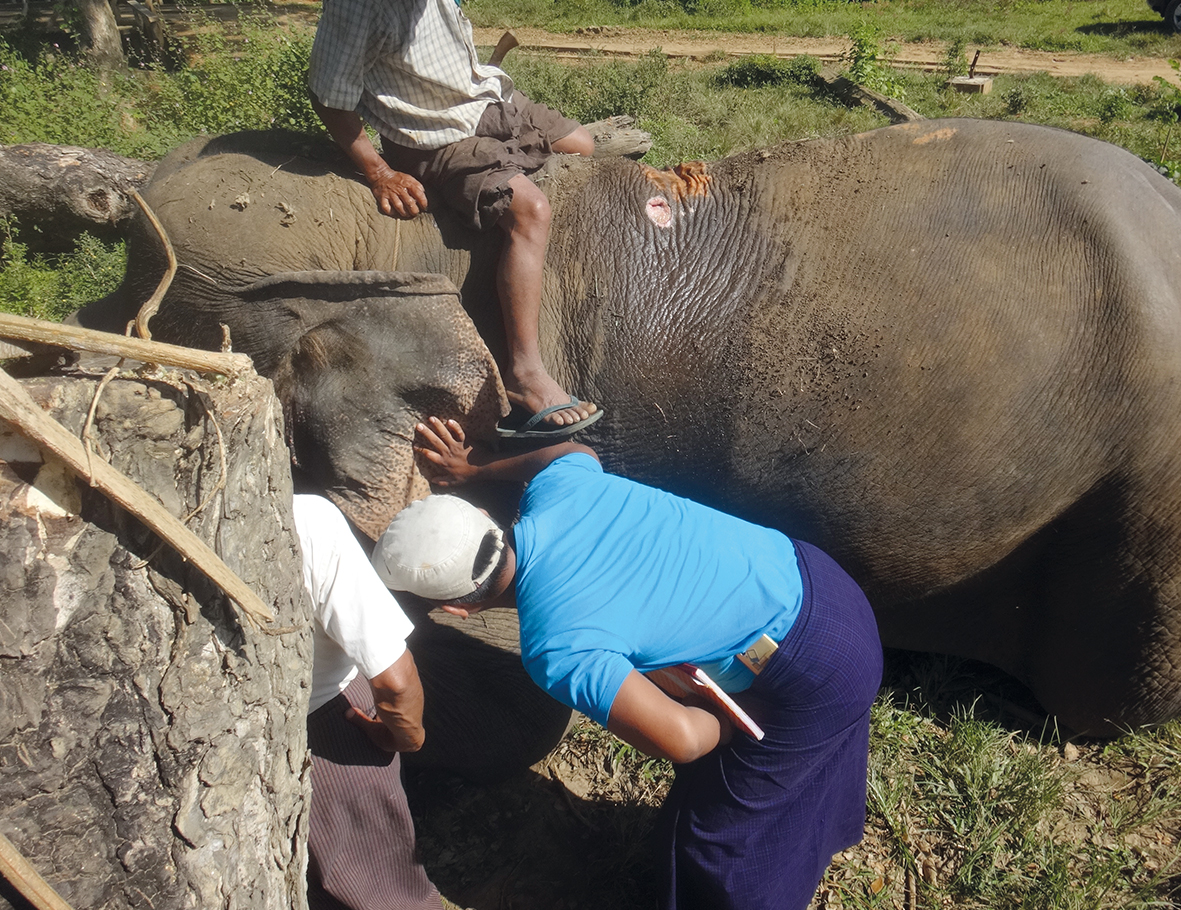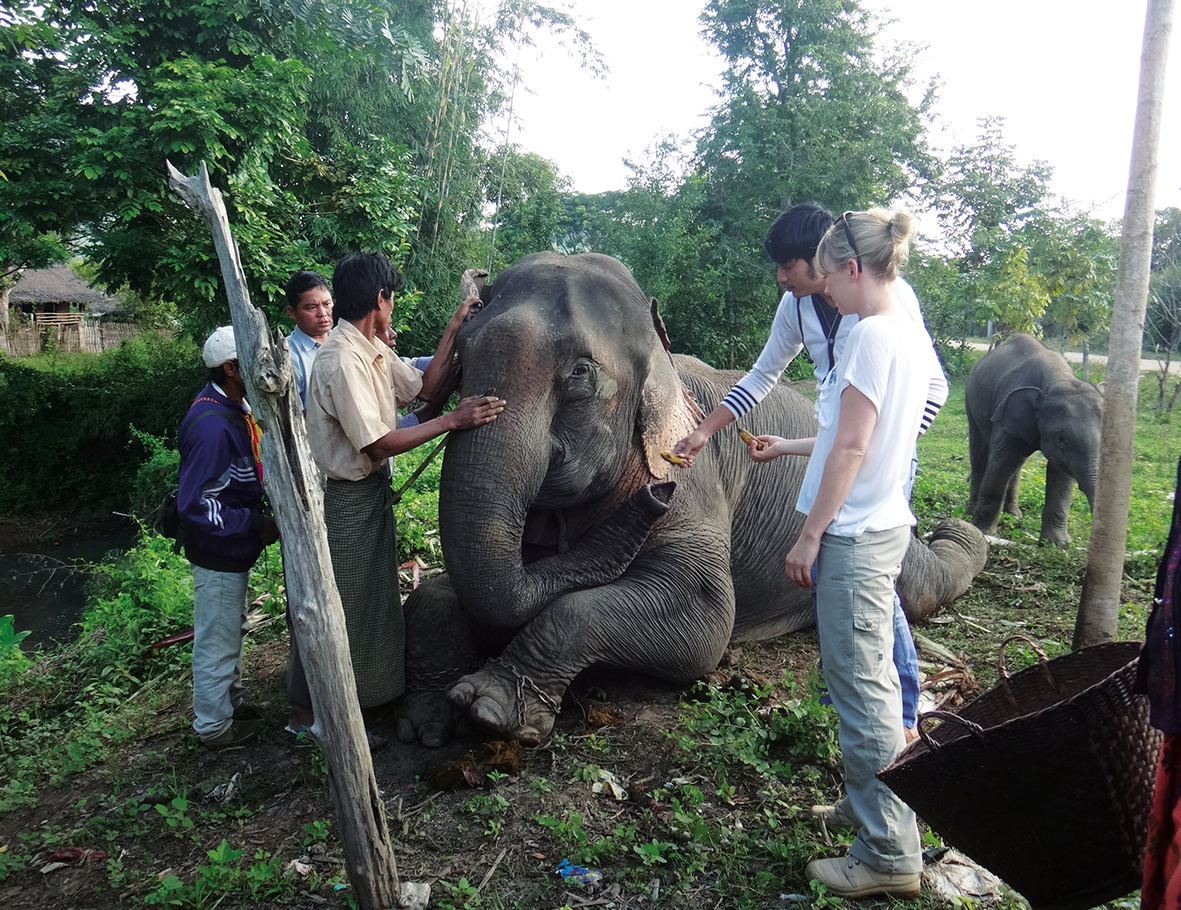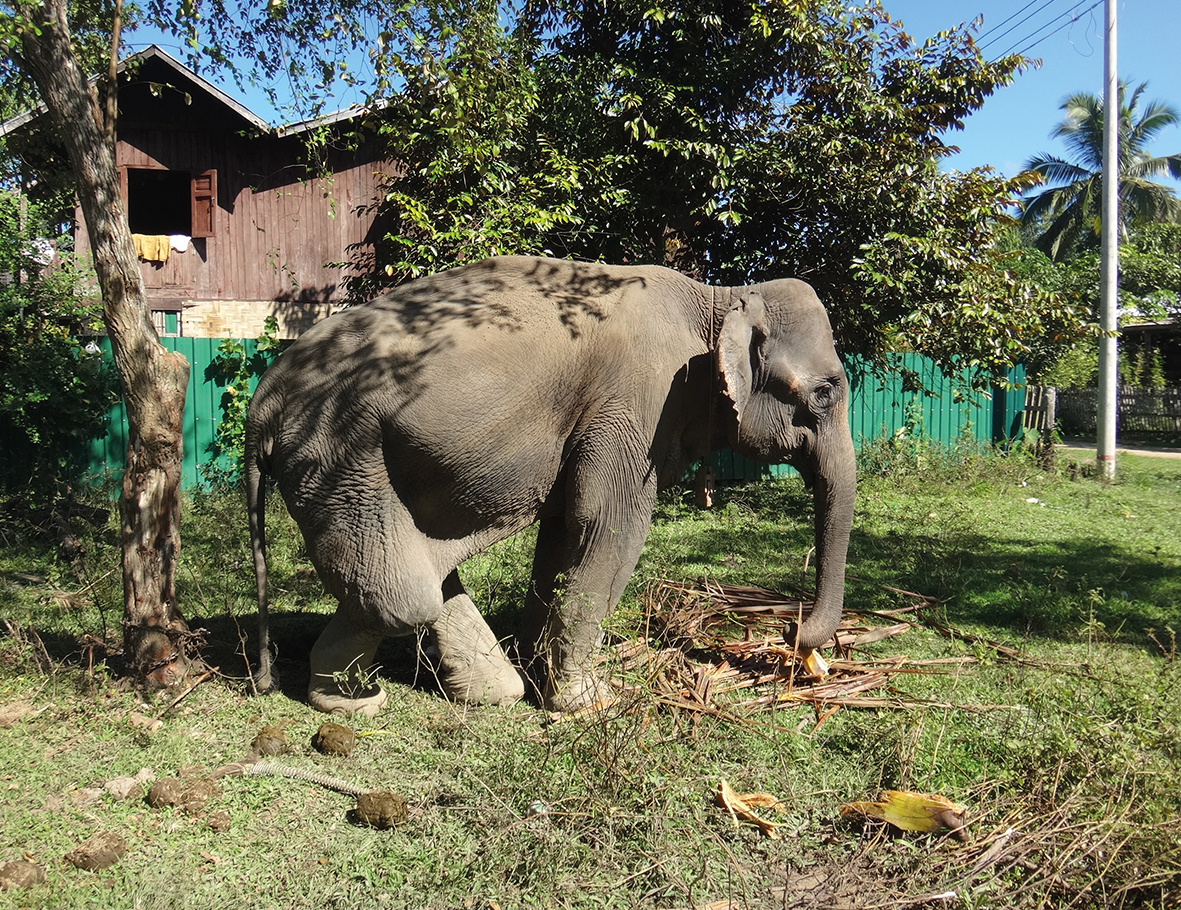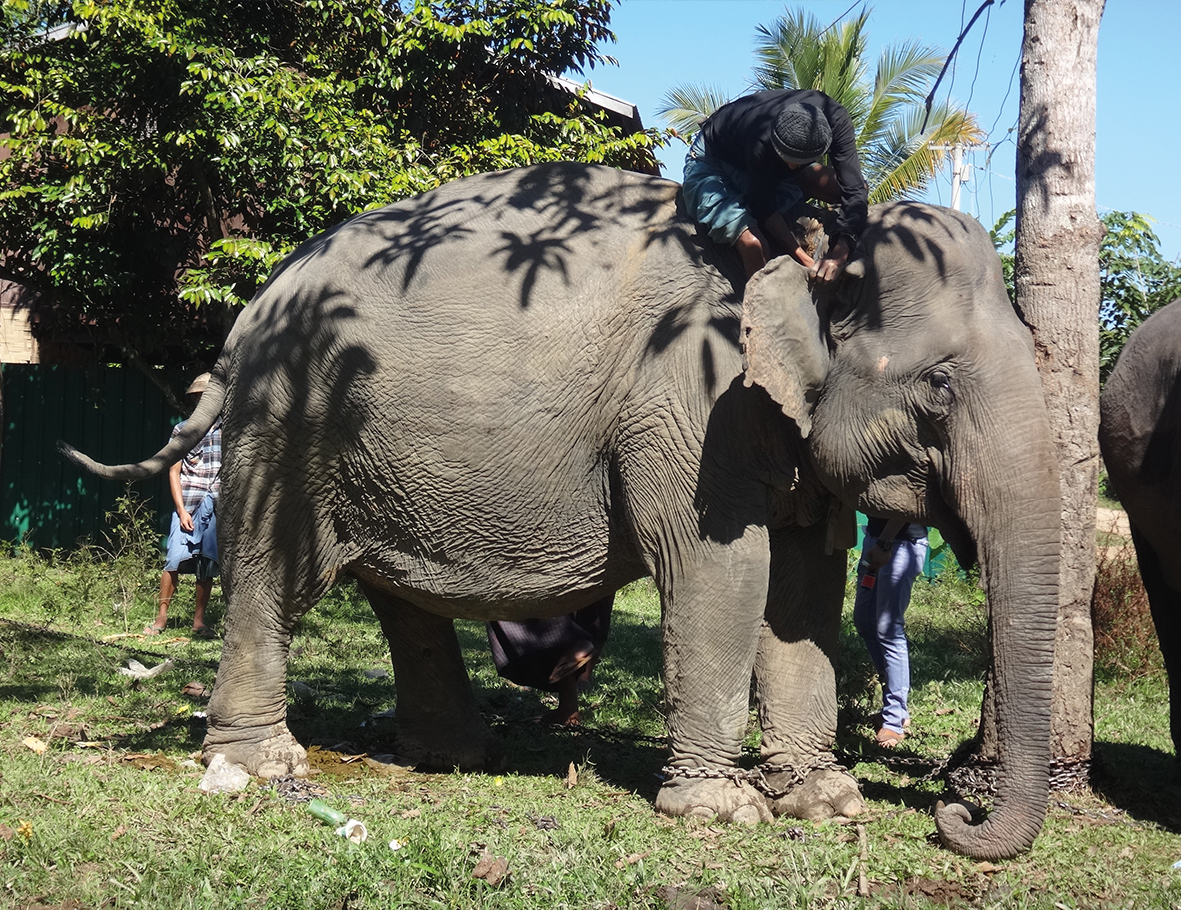- AZWS Elefanten-Hilfe Myanmar 2017
- AZWS Elefanten-Hilfe Myanmar 2017
- AZWS Elefanten-Hilfe Myanmar 2017
- AZWS Elefanten-Hilfe Myanmar 2017
- AZWS Elefanten-Hilfe Myanmar 2017
- AZWS Elefanten-Hilfe Myanmar 2017
- AZWS Elefanten-Hilfe Myanmar 2017
- AZWS Elefanten-Hilfe Myanmar 2017
- AZWS Elefanten-Hilfe Myanmar 2017
- AZWS Elefanten-Hilfe Myanmar 2017
- AZWS Elefanten-Hilfe Myanmar 2017
Protected Habitat for Elephants in Myanmar
The trip in November to Myanmar taken by Prof. Dr. Henning Wiesner, Dr. Julia Gräfin Maltzan and Dr. Miriam Wiesner of the Akademie für Zoo- und Wildtierschutz e.V. was arduous. The assignment: to examine and treat 34 elephants. The animals had been used for logging in the timber industry. Now they were looking forward to spending lives in safety and rest in a new Unesco Biosphere Reserve.
Reason enough for the Akademie to undertake the long journey from Germany to the north of Myanmar. It took about one and a half days for veterinarians Dr. H. Wiesner, Dr. Maltzan and Dr. M. Wiesner to reach their goal, the Lake Indawgyi Nature Reserve. The lake is one of the largest bodies of water in South East Asia and provides a habitat for a multitude of endangered wild animals. Due to its many heavily protected species of birds, the Reserve has been nominated a “Ramsar Reserve”. This name stands for an international treaty of, in the meantime, 170 countries for the protection of wetland areas, in particular, habitats of water and wading birds. The protection of the region surrounding Lake Indawgyi is especially essential because it is still the habitat of white-backed vultures and slender-billed griffons. Their populations have decreased drastically worldwide because in many countries, tons of the pain killer diclofenac have been dispensed in order to make cattle and water buffaloes fit for their work in the rice fields. If the animals die in the fields, they serve as food for the vultures: a disastrous meal which is a harbinger of certain horrible death for the vultures who succomb by the dozen due to the - for them - lethal diclofenac. According to Unesco, the painkilling drug was never used at Lake Indawgyi – making the more than 133,715-hectarelarge region so vital for the survival of these species.
For this reason, the region was declared a Biosphere Reserve in 2017 – also because it is the home to other rare animal species: the endangered Myanmar softshell turtle (Nilssonia formosa), endemic fish and butterfly species, as well as primates or elephants. The latter are mostly privately owned and were used for years in the logging of precious woods. These days are over. The approximately 35,000 people who live on the shores of the lake distributed among 13 villages will earn their living with sustainable agriculture and eco-tourism in the future. Among other things, tourists should be offered contact to the elephants. The goal is to sensitize people to the species. However, before all of this can take place, the health of the animals has to be certified. The NGOs “Chances for Nature” and “Fauna & Flora International”, which are active in the area, turned to the Akademie in the spring of 2017 with the request to help with the necessary examinations.
For the Akademie veterinarians, this meant that a total of 34 elephants, spread around 10 different villages surrounding the lake, had to be examined and treated within four days. Feces, blood and hair samples were taken which could partially be examined under the microscope on site and later precisely analyzed in the Institute for Parasitology and Tropical Medicine at Munich’s Ludwig Maximilian University. The animals proved to be for the most part healthy and well fed. The Burmese veterinarians, with whom the Akademie worked, were especially impressed by the blowpipe system which will enable them to immobilize and treat even aggressive animals without danger and in an animal-friendly manner. The veterinarians from the region are interested in further examinations and a blowpipe workshop in 2018 – a wish which the Akademie will gladly fulfill. ■

